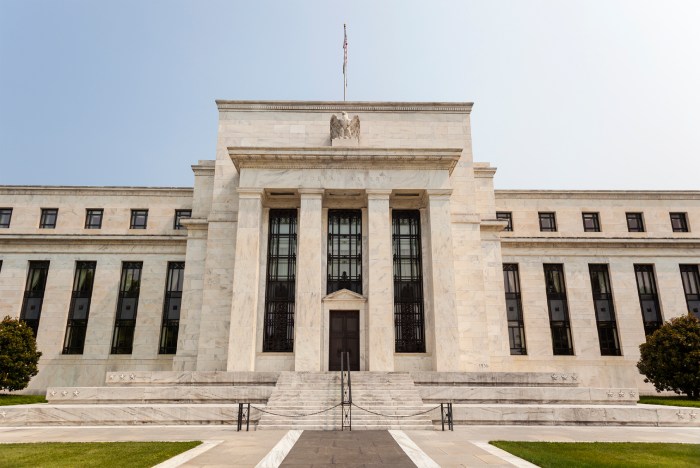Welcome to the world of the Federal Reserve where mysteries unfold and financial decisions shape the nation. Get ready for a deep dive into the workings of this powerhouse institution that impacts us all.
In this article, we will uncover the key aspects of the Federal Reserve, from its history to its tools and functions, shedding light on its crucial role in the economy.
Overview of the Federal Reserve
The Federal Reserve, often referred to as the Fed, plays a crucial role in the United States’ financial system. Established in 1913, it serves as the central bank of the country, responsible for conducting monetary policy, regulating banks, and maintaining financial stability.
Role of the Federal Reserve
The Federal Reserve controls the nation’s money supply, aiming to promote maximum employment, stable prices, and moderate long-term interest rates. It achieves this through actions such as setting interest rates, conducting open market operations, and regulating the banking industry.
History of the Federal Reserve System
The Federal Reserve was created in response to financial panics and economic instability in the late 19th and early 20th centuries. The Federal Reserve Act was signed into law by President Woodrow Wilson on December 23, 1913, establishing the central banking system we know today.
Structure and Organization of the Federal Reserve
The Federal Reserve is composed of three main components: the Board of Governors, 12 regional Federal Reserve Banks, and the Federal Open Market Committee (FOMC). The Board of Governors, located in Washington, D.C., oversees the entire system, while the regional banks implement monetary policy and supervise commercial banks within their districts. The FOMC is responsible for setting key interest rates and guiding monetary policy decisions.
Functions of the Federal Reserve

The Federal Reserve, often referred to as the Fed, plays a crucial role in the U.S. economy through its various functions. Let’s delve into the primary functions of the Federal Reserve and how it impacts monetary policy and oversees financial institutions.
Regulating Monetary Policy
The Federal Reserve regulates monetary policy to achieve stable prices, maximum employment, and moderate long-term interest rates. Through tools such as open market operations, discount rates, and reserve requirements, the Fed influences the money supply in the economy. By adjusting these tools, the Federal Reserve aims to promote economic growth while keeping inflation in check.
Overseeing Banks and Financial Institutions
Another key function of the Federal Reserve is overseeing banks and financial institutions to ensure the stability of the financial system. The Fed supervises and regulates banks to maintain the safety and soundness of the banking sector. It conducts stress tests and monitors compliance with regulations to prevent financial crises and protect depositors’ funds. Additionally, the Federal Reserve acts as a lender of last resort, providing liquidity to banks in times of financial distress to prevent systemic failures.
Tools Used by the Federal Reserve
The Federal Reserve utilizes a variety of tools to implement monetary policy, each playing a crucial role in influencing the economy and financial markets.
Open Market Operations
Open market operations involve the buying and selling of government securities in the open market. When the Federal Reserve buys securities, it increases the money supply, leading to lower interest rates and stimulating economic activity. Conversely, selling securities reduces the money supply, raising interest rates to curb inflation.
Discount Rate Changes
The discount rate is the interest rate at which banks can borrow funds directly from the Federal Reserve. By changing the discount rate, the Fed can encourage or discourage banks from borrowing money. Lowering the discount rate makes it cheaper for banks to borrow, promoting lending and economic growth. Conversely, raising the discount rate makes borrowing more expensive, slowing down economic activity to control inflation.
Reserve Requirements
Reserve requirements refer to the amount of funds that banks are required to hold in reserve against deposits. When the Fed lowers reserve requirements, banks can lend out more money, increasing the money supply and boosting economic activity. Conversely, raising reserve requirements restricts banks’ ability to lend, reducing the money supply and curbing inflation.
Economic Indicators Monitored by the Federal Reserve
The Federal Reserve closely monitors various economic indicators to assess the health of the economy and make informed decisions.
Inflation
Inflation, or the rate at which prices increase, is a key indicator that the Federal Reserve watches. High inflation can erode purchasing power, while low inflation may indicate weak demand. The Federal Reserve aims to maintain stable prices to support long-term economic growth.
Employment
The Federal Reserve pays close attention to employment data, such as the unemployment rate and job creation numbers. High levels of unemployment can signal a weak economy, while low unemployment may lead to wage pressures and inflation. The Federal Reserve considers employment trends when setting monetary policy.
GDP (Gross Domestic Product)
GDP measures the total value of goods and services produced in the economy. The Federal Reserve uses GDP data to gauge economic growth and overall performance. Strong GDP growth can indicate a healthy economy, while negative growth may signal a recession. The Federal Reserve considers GDP trends when adjusting interest rates and other monetary policies.